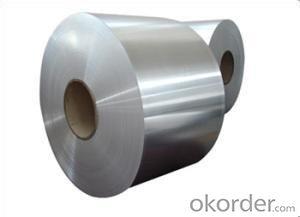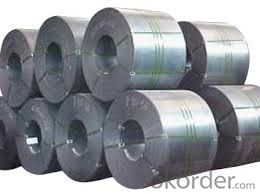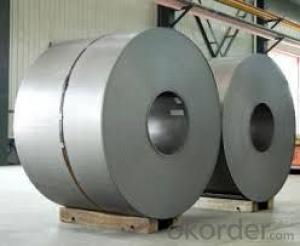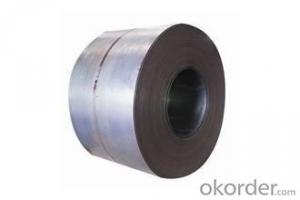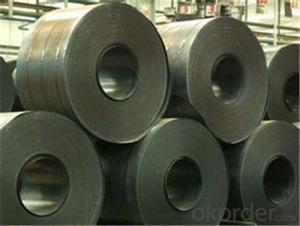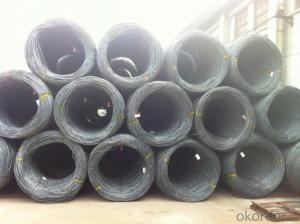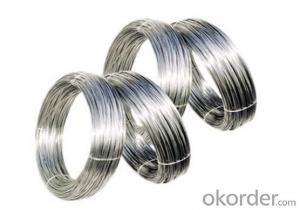hot rolled steel coil -SAE1006 in Good Quality
- Loading Port:
- China main port
- Payment Terms:
- TT OR LC
- Min Order Qty:
- 30 m.t.
- Supply Capability:
- 500000 m.t./month
OKorder Service Pledge
OKorder Financial Service
You Might Also Like
Description:
Hot-Rolled Steel Sheets and Coils are applied to a wide range of uses such as automobile, electrical appliance, machinery manufacturing, container manufacturing, shipbuilding, bridge, pipeline, and receive high acclaim from our customers for its excellent quality.
Specification:
Product: | Hot Rolled Steel Coils/Sheets |
Material: | Q195,Q235,A36,SS400,S235JR,Q345,ST37-2, CCSB etc |
Standard : | JIS G3002 GB/T251B |
Technique: | hot rolled |
Thickness | 1.2mm to 200mm |
Tolerance of thickness: | :+/-0.03mm |
Width: | 750mm-2000mm |
Tolerance of width: | :+/-5.00mm (aiming to +/-2.00mm) |
Normal width: | 914mm, 1000mm, 1200mm, 1219mm, 1250mm,1500mm |
Length: | According to requirement |
Coil ID: | 508mm-610mm |
Coil Weight: | 10-25 Metric Tons |
Surface: | Black, Chromate, fingerprint resistant treatment, slight oiled or non-oiled, dry |
Port of Loading: | Tianjin/Shanghai port |
Packaging Details: | Standard export packing or according to the clients required |
Delivery Time | Within 30 days after received 30% deposit or workable L/C |
Payment Terms: | L/C,T/T |
Iamge:
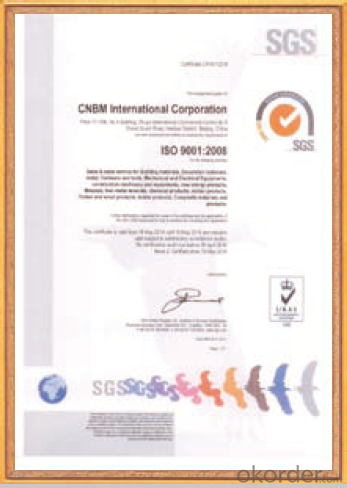
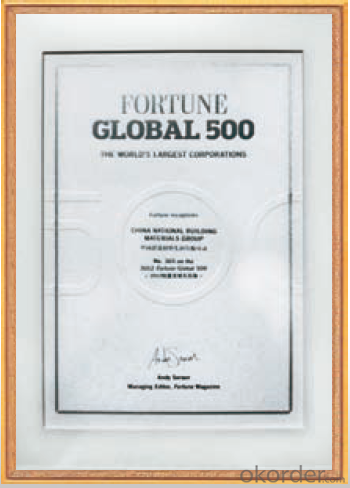
Our products enjoy an excellent reputation and have been exported to Europe, South-America, the Middle-East, Southeast-Asia, Africa and Russia etc.. We sincerely hope to establish good and long-term business relationship with your esteemed company.
- Q: Having a greater amount than 2% carbon in steel causes steel to suddenly become brittle. Why is this?
- Carbon fiber has better tensile capability then steel meaning its better while pulled aside. Plus you could mould the fiber to make autos-or homes-out of carbon fiber.
- Q: How are steel coils used in the production of roofing systems?
- The production of roofing systems involves the utilization of steel coils in various ways. Initially, the steel coils undergo unrolling and are then fed into a machine, where they are cut to the desired length for the roofing panels. Typically, these coils are composed of galvanized steel, which is coated with a layer of zinc to protect against rust and corrosion. Once the coils have been cut, they are subsequently passed through a roll-forming machine. This machine is responsible for shaping the steel into the necessary profile for the roofing panels. The specific shape of the panels may differ depending on the design and functionality of the roofing system. Following the formation of the steel, it may undergo additional processes, such as embossing or stamping, to incorporate texture or patterns onto the panels. This aids in enhancing the visual appeal of the roofing system and providing it with a distinct appearance. After the steel panels have been formed and processed, they are coated with supplementary protective layers or finishes, such as paint or polymer coatings. These coatings further augment the durability of the roofing system and offer resistance against weather elements, UV rays, and corrosion. The final step in the production of roofing systems entails the installation of the steel panels on the roof. Typically, the panels are secured to the roof structure using screws or nails. The panels are designed to interlock, ensuring a secure and watertight installation that safeguards against leaks and moisture infiltration. In conclusion, steel coils play a vital role in the production of roofing systems, providing a durable and long-lasting material that can withstand harsh environmental conditions. The versatility of steel permits various design options and customization, making it a favored choice for roofing applications.
- Q: What is the lifespan of coated steel coils?
- The lifespan of coated steel coils can vary depending on various factors such as the type and quality of the coating, the environmental conditions it is exposed to, and the maintenance and care provided. Generally, high-quality coated steel coils can have a lifespan of 25 to 50 years or even more. However, it is important to note that this is just an estimate and the actual lifespan may vary. Regular inspections, proper installation, and timely maintenance can significantly extend the lifespan of coated steel coils. Additionally, factors such as exposure to harsh weather conditions, corrosive environments, and improper handling can potentially shorten the lifespan. It is recommended to consult with manufacturers or industry experts to determine the most suitable coating and expected lifespan for specific applications.
- Q: Are steel pokemon weak against any attacks? If so, what types? (like water, grass, etc.)
- Thier weak aginst Fire type pokemon.
- Q: What are the dimensions of steel coils used in the industrial machinery industry?
- The dimensions of steel coils used in the industrial machinery industry can vary depending on the specific application and requirements. However, common dimensions for steel coils used in this industry range from 0.15 to 3.5 mm in thickness and 600 to 2,000 mm in width. The inner diameter of the coil typically ranges from 508 to 762 mm. It is important to note that these dimensions can vary based on the specific needs of the machinery and the manufacturer.
- Q: PLS tell me all Foam Steel Characteristics and use?Thanks
- Foam steel [often steel foam] is used in applications that require light weight but high rigidity and strength. Watertight doors on modern ships are often made of foam steel. Pressure doors on aircraft are possible uses. As we keep striving for lighter weights in cars, foam steel might have some useful applications in bodies. There is a technical paper online that is in .pdf format that has a good discussion of the process and characteristics of foam steel.
- Q: Can steel coils be coated with anti-graffiti materials?
- Yes, steel coils can be coated with anti-graffiti materials. These materials are designed to prevent graffiti from adhering to the surface of the steel coil, making it easier to remove any graffiti that may be applied.
- Q: How are steel coils used in the manufacturing of agricultural irrigation systems?
- Steel coils are used in the manufacturing of agricultural irrigation systems as they are shaped and formed into pipes, tubes, or other components that are essential for transporting water from the source to the fields. The coils provide strength, durability, and corrosion resistance, ensuring that the irrigation system can withstand the harsh agricultural environment and last for a long time.
- Q: the comparison needed between other steel
- It's cheaper than alloyed steels.
- Q: Im looking at some knives and am wandering if they use good steel one is this case knife and its 54 dollars Do they use good steel or not Iv never had a good experience with Case but am wandering if they use good steel now? if you all have any other recommendations let me hear them I got my Selection from here so any others wont hurt. so basic break down does case use good steel know?
- Old Case Knives
Send your message to us
hot rolled steel coil -SAE1006 in Good Quality
- Loading Port:
- China main port
- Payment Terms:
- TT OR LC
- Min Order Qty:
- 30 m.t.
- Supply Capability:
- 500000 m.t./month
OKorder Service Pledge
OKorder Financial Service
Similar products
Hot products
Hot Searches
Related keywords
